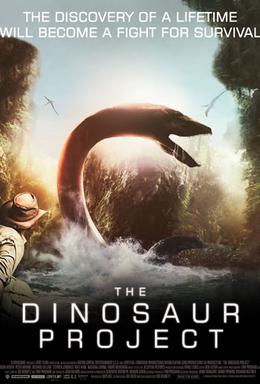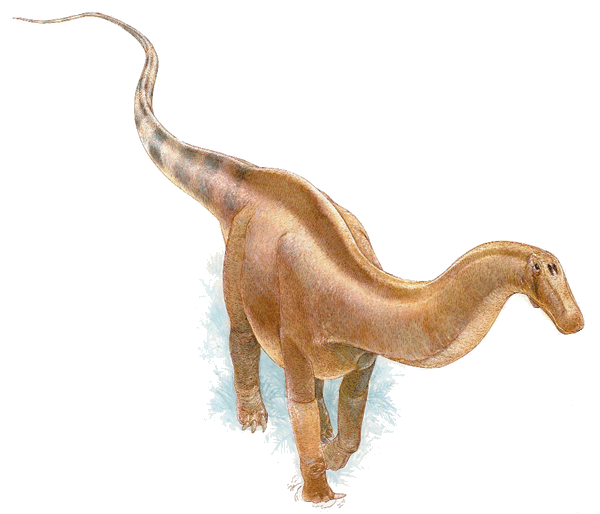Days till:
It is: 31 days till Labor Day
It is: 47 days till Fall
It is: 110 days till The Good Dinosaur's release day
In the Spotlight:
Unfortunately, I don't have anything to share in this section this week.
Topic of the Week:
Dinosaurs used to roam all over this planet. They lived on every continent, including Antarctica. Yet, their fossils normally appear in rock layers underneath the K-T Boundary. This is where evolutionists believe a massive six-mile wide comet or asteroid slammed into the Gulf of Mexico 65 million years ago and killed not only dinosaurs, but most of the marine reptiles, pterosaurs and most of the other terrestrial creatures. That's how to look at things through a secular worldview. But, as Christians, we should instead use God's Word, the Holy Bible, to determine the history of Life on Earth – in other words, we should use our Christian worldview. So, dinosaurs were on the earth, now they're not. What happened to them? Dinosaur extinction is a lengthy topic, but I'd rather not discuss it today. Instead, there's another topic we're going to look at – instead of looking at why the dinosaurs are extinct, we are going to look at if the dinosaurs are really extinct? Yes, you read right! Your typical evolutionist would say no due to their beliefs, but if we follow the Bible's framework, we learn that the Flood of Noah's time described in the Bible was responsible for the many rock layers containing fossils under K-T boundary. The Bible also says that God brought two of every kind of land animal on board (and seven pairs of clean animals), so this would have included a “teenage” or perhaps sub-adult pair of dinosaurs (which were smaller and easier to care for than full grown adults). These dinosaurs came off the ark to reproduce in the post-flood world (even if they weren't as numerous as before). You will recall if you've read the article I wrote a couple of weeks ago called “The Living Dinosaurs”, that that post was the first of a two part topic (you can click on the link to go to this article). On the first part of this topic, I made a review for a movie that recently came out on DVD called The Dinosaur Project, a film about an ill-fated mission to find a living Mokele-mbembe (in the movie it was a plesiosaur). The topic of dinosaurs that could possibly still be living on the planet is a very extensive topic, and I plan to delve into much of it on a later date. So on this second part of this topic, we'll be looking at an animal that might not have gone extinct at all – maybe the dinosaurs didn't die out, what if they're still among us? Let's learn about Mokele-mbembe!
 |
| The theatrical poster for this movie |
Creatures such as Big Foot, the Abominable Snowman, Loch Ness
Monster and Mokele-mbembe are called “cryptids”, creatures that may or may not
exist. In The Dinosaur Project, a group of scientists went to the deep
jungles of the Congo in Africa to find a living Mokele-mbembe. Now, in the
movie, this creature was a plesiosaur, but in reality, if this animal does
exist, it is probably a dinosaur. Now let's learn about this animal in more
depth.
 |
| An illustration of Mokele-mbembe |
Over the past 100 years, sightings of Mokele-mbembe have been
reported. While each of the report does vary some, they all have some
similarities. This animal is described as being the size of or larger than an
elephant, having a squat body and a long neck and tail. It is said to use its
long neck to reach the tree leaves and fruit it eats (sounding familiar?). This
beast is believed to spend much of its time in rivers and lakes. In fact, in
Lingala language, Mokele-mbembe means “one who stops the flow of rivers”. They
also are said to be able to climb out of the water and onto the river banks and
they leave clawed footprints behind them. So this appears to rule out most, if
not all Mokele-mbembe sightings as plesiosaurs, since most plesiosaurs probably
couldn't leave the water and none of them had clawed feet. No, the animal that
fits the description of Mokele-mbembe isn't any animal that is known to be
living today; some skeptics have claimed this creature to be anything from a
crocodile or large snake to the elephant, hippo or rhinoceros. The
behemoth-animal is often said to be a gray-brown color. When explorers and
scientists go into the Congo and other nearby regions to find evidence of
Mokele-mbembe, they will often question the natives and show them pictures of
living and extinct animals. They ask the natives to tell them which animal
looks most like Mokele-mbembe, the natives often point to an animal only known
to modern scientists from the fossil record with a long neck and tail, small
head, thick legs and a large body – they point to a member of the sauropod
kind of dinosaur. One sauropod that fits the description of Mokele-mbembe
is a small Apatosaurus.
 |
| A dinosaur similar to a small Apatosaurus might be responsible for the Mokele-mbembe sightings. |
The first time that Mokele-mbembe was known to people other
than natives was when a French Missionary to the African Congo named Lievain
Bonaventure saw the humongous footprints of the creature that were three-feet
in diameter in 1776, but he never saw the creature itself. Of course,
considering dinosaurs weren't thoroughly described until the early 1800's, if
Lievain did see Mokele-mbembe, he probably wouldn't have had a clue what it
was.
But between 1910-1911, reports of Mokele-mbembe were finally
making worldwide news in the newspapers. Since sauropod fossils had been
discovered, many people knew of a possible identification for the beast. Some
were skeptical about this animal, while others believed otherwise. But regardless
of personal opinions, there was no firm evidence of the creature's existence.
There was only one way to prove whether or not this cryptid exists! Explorers
and scientists would have to go out themselves and find the proof!
Scientists and explorers started going out in droves to find
proof of Mokele-mbembe's existence. But most came back with the same results –
failure. The only “proof” they brought back was either tales, stories and
descriptions of Mokele-mbembe from the locals and/or sometimes sightings of
large footprints. Here are just a few of the expeditions that took place:
1919-1920 – Smithsonian Institute: Failed
1927 – Alfred Aloysius Smith: Failed
1938 – von Boxberger – Failed
1939 – von Nolde – Failed
1979 – Mackel-Powell – Failed
1985-1986 – Operation Congo – Failed
1986 – Ronald Botterweg – Failed
2000 – William Gibbons – Failed
2001 – CryptoSafari/BCSCC – Failed
2006 – Vice Guide to Travel – Failed
2009 – Monster Quest – Failed
2011 – Beast Hunter – Failed
So as you can see, no one has yet come forth with affirmative
proof for its existence. I mean, even with Big Foot, we have numerous photos
and even a video or two of it. But for Mokele-mbembe, not one photograph or
video . . . right? Well, for the most part that's true. However, some explorers
who have claimed to have seen the animal have tried to either get a photo or
film it, but, of course, most of these explorers who supposedly filmed or
photographed it claim that their photos either didn't come out, were blurry,
not really an animal at all and etc. While it may seem a little suspicious that
maybe these photos or film footage never existed to begin with, I don't find it
likely that every single one of those “supposed footage” instances were fakes.
And actually, we do have a video that might be of Mokele-mbembe.
In 1988, a Japanese expedition went to the Congo. The
expedition was led by a wildlife official named Jose Bourges. In the year of
1992, they were filming above Lake Tele (where the natives say Mokele-mbembe is
often spotted) in a plane when they noticed something in the water. The
cameraman tried to get a better look at the object and he caught 15 seconds of
footage of a strange object swimming in the lake. The footage isn't the best,
but it does appear that it could be a large, long necked sauropod! Of course,
as has been pointed out by skeptics, it might also be anything from some men in
a canoe, an elephant swimming or a snake. We may never know, but maybe, just
maybe...
While we have no current evidence for Mokele-mbembe at this
point, there are still many square miles of uncharted land in the Congo and
surrounding areas. Perhaps somewhere in the deep jungles remains the last
living dinosaurs on the planet (it's often said that in those deep jungles, you
can be a few meters from an elephant and never know it!). If a dinosaur is
discovered, this isn't the first time an animal previously thought extinct was
discovered: a fish called the Coelacanth was thought extinct for 65 million
years was rediscovered alive and well off the coast of Africa in the Indian
Ocean. The wollemia pine tree supposedly went extinct with the dinosaurs but was
discovered living in Australia. A subspecies of whale thought to be extinct (by evolutionists) for the past 2 million years was also
rediscovered in oceans in the southern hemisphere. So finding a living dinosaur
definitely isn't out of the question.
 |
| The fossil skeleton of a large sauropod |
Will scientists find a living dinosaur in the Congo? No one
really knows, but it isn't out of the realms of
possibility. If they are out there (and there's definitely enough forest
to hide in!), I sure hope they find one before the last of its kind vanishes
from the face of the earth for good! Don't you?
Disclaimer: Many (or in some cases all) of the photographs and images
above are not mine. If you own one or more of them and would like them
to be removed, politely let me know via my email address.
No comments:
Post a Comment